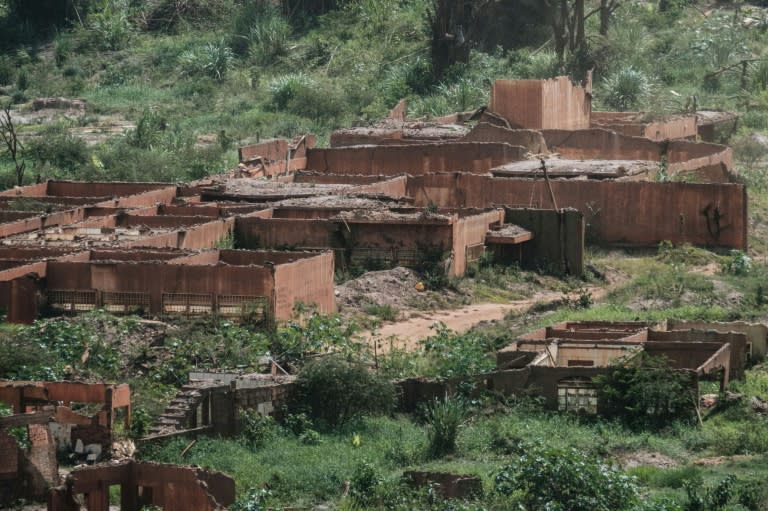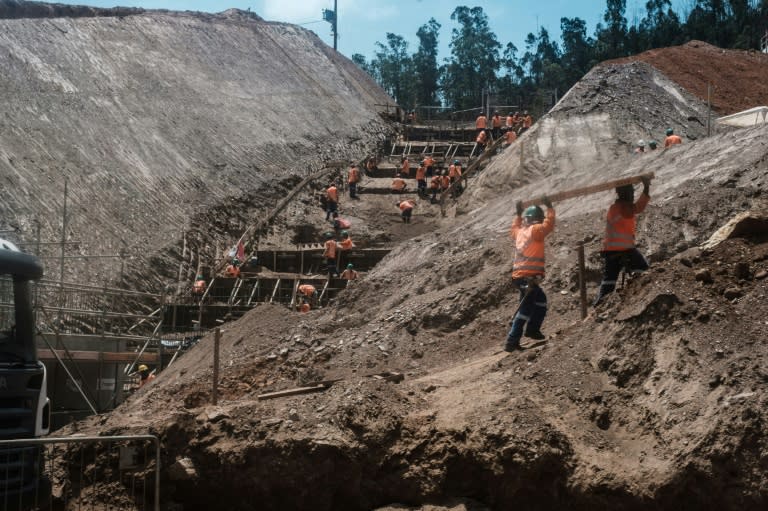Brazil dam burst like 'end of the world'
Jose Pascual thought the end of the world had come when red mud, pouring from a broken Brazilian mining dam, engulfed his village a year ago. In a way, he was right. Twelve months from the deadly accident at an iron ore mine in Minas Gerais state, the Samarco company and its giant owners BHP-Billiton and Vale say they are putting the pieces back together. Yet the way of life Pascual has known in all his 76 years in the village of Paracatu de Baixo shattered beyond repair that day. The disaster began in the afternoon of November 5, 2015, when a dam holding mining waste burst without warning about 17 miles (27 kilometers) up a small river from Paracatu. Thirty two million cubic meters (42 million cubic yards) of sludge rushed down the valley, killing 19 people unable to get out of the way and smashing anything in the flood's path, starting with the adjacent village of Bento Rodrigues. A helicopter reached Paracatu in time to warn villagers before their turn came. "I was in the garden and my wife was putting clothes out to dry when they came," recalled Pascual, a lean, strong man, whose snowy hair was hidden under a battered Stetson. "They said: 'Get out of here!'" Running uphill with the rest of his neighbors, Pascual heard the disaster before he saw it. "It was the noise of a runaway train. Then we looked at what was coming," he said. "It was the color of the clay. There wasn't even water, just clay coming and this strong wind." The sliding wall of mud tore apart or submerged orchards, houses, roads, cars, animals, trees. "It was like the end of the world," Pascual said. "The lights went out." - Neck deep in mud - Pascual and his wife, whose 12 children live in other towns, were safe and their small house and plot of land, located on a slight rise, were spared. But Paracatu was finished. A year later mud still clogs the main street. Mud sits heaped in roofless houses. Mud stains walls of the ruined church. Pascual is hardly the quitting type, recounting how he waded back home through the mud to retrieve his wife's forgotten documents. "It was up to here," he said, pointing to his neck. Even today, he tends his crops of manioc, onion, tomato and maize. Ever resourceful, he has grown his own tobacco for cigarettes that he rolls in dried maize leafs. Yet the clock is running down. Samarco says it will build a new Paracatu in a different location, with each inhabitant receiving a house equal to the one that was lost. A majority of residents have agreed to take the deal, although it means abandoning their ancestral home -- and Pascual is with them. His house and crops may be intact, but too much else has been spoiled. The river where he used to fish now runs red with mining waste. His two best cows were killed and so his production of round, white cheeses depends on two skinny survivors that he herds around the ruins. Income is down 75 percent. Samarco says it could take until March 2019 before the new Paracatu is built. In the meantime, Pascual tends the farm alone, making a journey of about an hour on weekends to see his wife. It's a lonely, sometimes spooky existence. "Sometimes I spend the whole night awake. Any noise will wake me," he says. And even if he could somehow hang on in the village, community life was always about more than mere survival. "We've ended up without a bar where you can go to get a drink, just a tiny drink," he said mournfully. "Yes, I want to leave."




